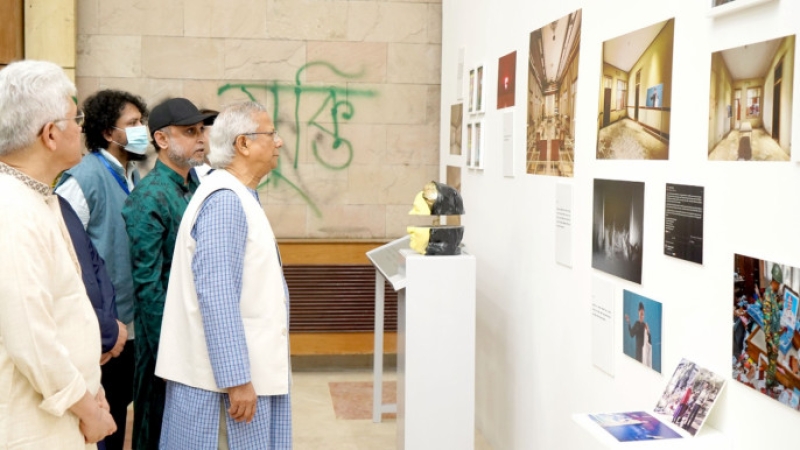- New Approach Must for Dhaka to Break Climate Aid Debt Trap |
- UN High Seas Treaty Clears Ratification, Set for 2026 |
- UAE Suspends Visas for Bangladesh, Eight Other Nations |
- Young disabled people of BD vow to advocate for peace |
- World Leaders Urged to Defend Human Rights and Justice |
July Memorial Museum to Depict 16 Years of Hasina Rule

The government is preparing to open the July Memorial Museum, a landmark initiative aimed at documenting what it describes as the “misrule” of former Prime Minister Sheikh Hasina’s 16-year tenure. The museum, now under construction at Ganabhaban, will showcase a sequence of political events, incidents of state violence, and allegations of authoritarian governance that defined the period.
Chief Adviser reviews progress
Chief Adviser Muhammad Yunus was briefed on the progress of the project at a meeting held at the State Guest House Jamuna on Saturday. Cultural Affairs Adviser Mostofa Sarwar Farooki, senior officials, and members of the museum’s curation team were also present.
The Chief Adviser expressed gratitude to those involved in the initiative, stressing that the museum should reflect not only the tragedies of the era but also the people’s courage and resistance.
“The museum aims to instill awareness and build a strong resistance against misrule among the public,” Yunus said.
Inauguration expected in November
According to Cultural Affairs Adviser Farooki, the museum’s construction is expected to be completed by 31 October, with the inauguration planned for the first week of November.
“We are curating images, documents, and testimonies to ensure the history of 16 years of misrule is preserved for future generations,” he noted.
Exhibits to highlight key events
The museum will feature detailed exhibits on significant national events, including:
The Pilkhana massacre of 2009, where dozens of army officers were killed, The Shapla Chattar crackdown of 2013, which left scores dead and injured, Allegations of vote rigging and electoral manipulation in successive polls, Cases of enforced disappearances and extrajudicial killings and Visitors will find these events presented in chronological sequence, supported by images, documents, and audiovisual material.
Voices of victims and resistance
Curator Tanjim Wahab explained that the project is being developed in consultation with the International Crimes Tribunal prosecution team and the commission for investigation into disappearances.
“Stories of state repression will be presented through archival material, testimonies, and visual displays. Audio recordings of orders for disappearances and murders, along with the experiences of families who were misled with false assurances, will form part of the exhibits,” he said.
Farooki added that a screening centre will show documentaries on the period, giving visitors a deeper understanding of the scale of alleged abuses and the resilience of those who resisted them.
A symbolic message
The Chief Adviser highlighted the symbolic significance of constructing the museum at Ganabhaban, once the seat of Hasina’s power, and later the site of mass protests on 5 August 2024, which led to her ouster.
“Visitors must feel the impact of that people’s resistance when they walk through the museum,” Yunus said.
Preserving memory for the future
Officials emphasised that the museum is not only about preserving history but also about shaping civic consciousness. It seeks to remind citizens of the dangers of authoritarian governance and inspire collective resolve to safeguard democratic values.
By capturing both the pain and resilience of the nation, the July Memorial Museum is intended to stand as a permanent reminder of a turbulent chapter in Bangladesh’s history, ensuring that the sacrifices made during that era are neither forgotten nor repeated.

